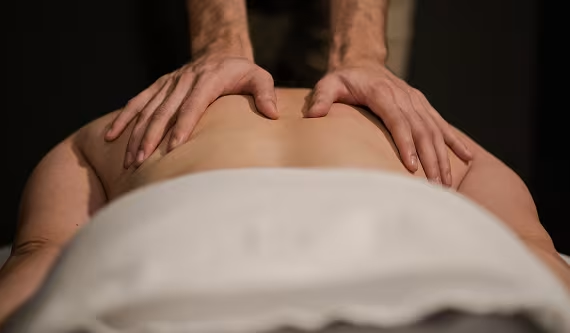Motocross is an extreme sport that demands a high level of fitness, strength, and endurance from riders. To excel in this sport, it is crucial to train the right muscles, prevent common injuries, and follow proper rest and recovery strategies. In this article, we will explore these key aspects of motocross and provide tips for staying safe on the track.
Building Strength for Motocross: Targeted Muscle Groups
To ride a motocross bike at high speeds, riders must have excellent balance, stability, and control. To achieve this, they need to focus on building strength in the following muscle groups:
- Core muscles: The core muscles play a crucial role in maintaining balance and stability on the bike. These muscles include the abs, lower back, and hip flexors.
- Leg muscles: Strong leg muscles are essential for maintaining control of the bike and absorbing the impact of jumps and landings. The main leg muscles used in motocross are the quads, hamstrings, and calves.
- Upper body muscles: The upper body muscles help riders maintain control of the handlebars and shift their weight on the bike. These muscles include the shoulders, chest, and upper back.
- Forearm muscles: The forearm muscles are essential for gripping the handlebars and maintaining control of the bike. These muscles can be strengthened through grip training exercises like wrist curls and hand grippers.
Common Injuries in Motocross: Prevention and Treatment Techniques
Motocross is a high-risk sport, and injuries are a common occurrence. Some of the most common injuries in motocross include:
- Fractures and dislocations: These injuries occur due to the high impact of falls and jumps.
- Concussions: Head injuries are a significant risk in motocross, and riders should always wear a helmet.
- Sprains and strains: These injuries can occur in any part of the body and are often caused by overuse or sudden movements.
- Road rash: Road rash occurs when the skin comes into contact with the ground and can range from mild to severe.
To prevent these injuries, riders should always wear proper safety gear, including helmets, chest protectors, and knee pads. Additionally, riders should follow proper training techniques, including stretching and warm-up exercises, to reduce the risk of overuse injuries.
If an injury does occur, proper treatment and rehabilitation are crucial. Rest, ice, compression, and elevation (RICE) is a common treatment methods for injuries like sprains and strains. For more severe injuries, surgery may be necessary, followed by physical therapy to regain strength and mobility.
Rest and Recovery Strategies for Motocross Injuries
Rest and recovery are crucial for preventing and treating injuries in motocross. Proper rest allows the body to heal and recover, while recovery techniques like massage and stretching can improve circulation and reduce muscle soreness.
In addition to rest and recovery, nutrition also plays a vital role in injury prevention and recovery. Eating a balanced diet that includes plenty of protein, complex carbohydrates, and healthy fats can provide the body with the nutrients it needs to repair and recover.
Essential Safety Gear and Tips for Motocross Riders
Proper safety gear is essential for motocross riders. The followings are some essential safety gear and tips for staying safe on the track:
- Helmet: A high-quality helmet is essential for protecting the head from impact and reducing the risk of concussion.
- Chest protector: A chest protector can help protect the chest, back, and shoulders from impact.
- Knee pads: Knee pads can help prevent knee injuries in the event of a fall.
- Boots: High-quality riding boots can provide ankle support
- Rest and Recovery Strategies for Motocross Injuries
If you do experience an injury while riding motocross, it’s important to take the time to properly rest and recover. This will help ensure that your injury heals fully and that you can get back to riding as soon as possible.
The first step in the recovery process is to stop riding and seek medical attention. Your doctor will be able to diagnose your injury and recommend a treatment plan.
In some cases, you may need to immobilize the injured area with a brace or cast. This can help prevent further damage and allow the injury to heal properly.
Rest is also essential for recovery. You should avoid any activities that could worsen your injury, including riding motocross until you have fully recovered.
During your recovery period, you can focus on other aspects of your training, such as flexibility and cardiovascular fitness. This can help you stay in shape and maintain your endurance while you heal.
Essential Safety Gear and Tips for Motocross Riders
The best way to prevent injuries while riding motocross is to wear proper safety gear and follow safe riding practices. Here are some essential safety tips and gear for motocross riders:
- Always wear a helmet: A helmet is the most important piece of safety gear for a motocross rider. It can help protect your head from serious injury in the event of a crash.
- Wear other protective gear: In addition to a helmet, you should also wear protective gear such as goggles, gloves, and boots. These can help protect your eyes, hands, and feet from debris and injury.
- Check your bike before riding: Before you start riding, make sure that your bike is in good condition. Check the brakes, tires, and other important components to ensure that everything is working properly.
- Practice safe riding techniques: Always ride within your skill level and follow safe riding practices. This includes staying in control of your bike at all times and avoiding reckless or dangerous maneuvers.
- Stay hydrated: Riding motocross can be physically demanding, so it’s important to stay hydrated before, during, and after your ride.
Conclusion
Motocross is an exciting and challenging sport that requires a combination of strength, skill, and safety. By building strength and endurance, taking steps to prevent and treat injuries, and following safe riding practices, you can enjoy the sport while minimizing your risk of injury. Remember to always wear proper safety gear and seek medical attention if you experience an injury. With the right approach, you can stay safe and healthy while pushing your limits on the motocross track.




